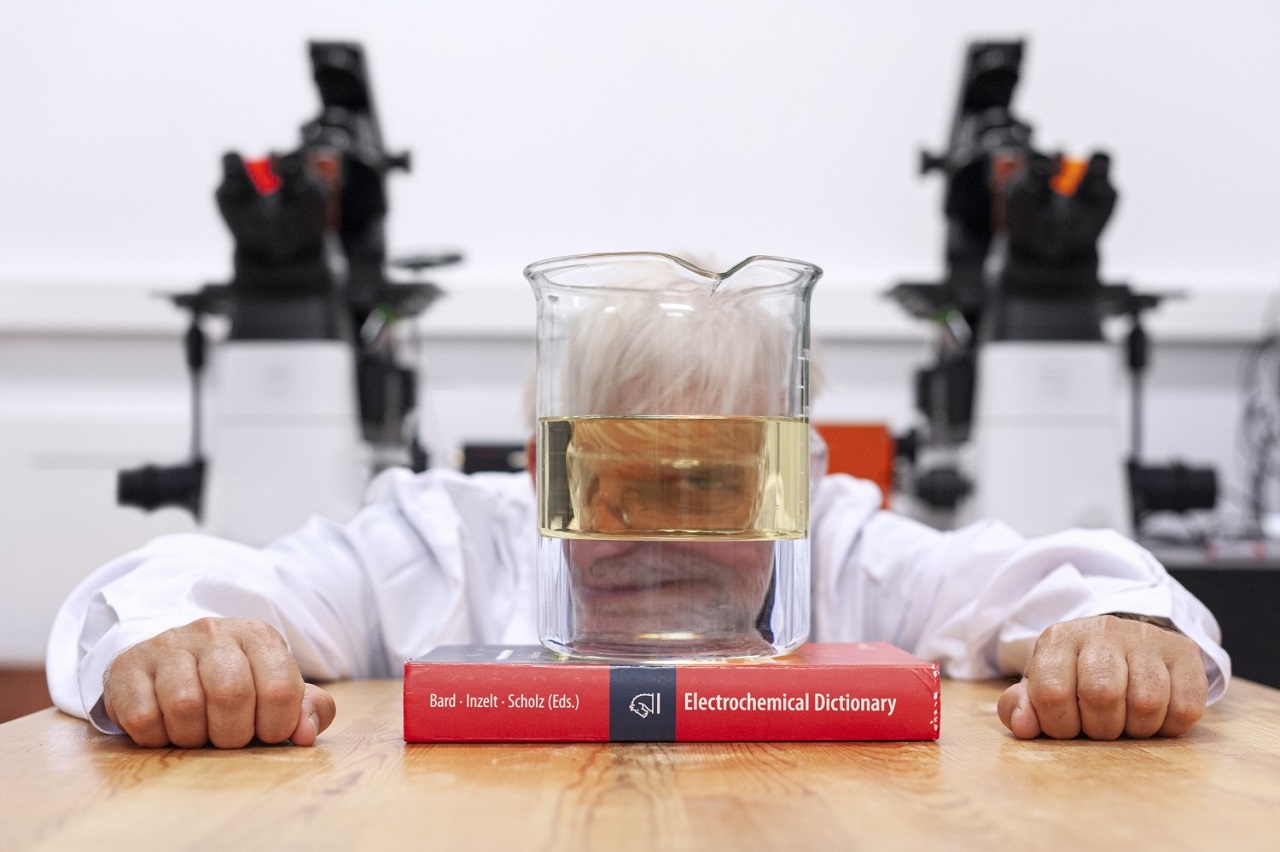Electricity generation from hydrogen peroxide
A team of scientists from the PAS Institute of Physical Chemistry presented their studies on the hydrogen peroxide generation at the boundary between two immiscible liquids – water and oil. Commercially available hydrogen peroxide is considered a promising candidate for producing power with minimal environmental impact.

Some liquids, such as oil and water, do not mix, but in hands of a chemist some interesting reactions can occur. Source: Institute of Physical Chemistry of the Polish Academy of Sciences, photo by Grzegorz Krzyżewski.
The hydrogen peroxide (H2O2), chemical compound widely available since the XVIII century, has long been known for its antiseptic properties. For years, it was used to disinfect the skin to prevent infections in the case of minor cuts. However, not everyone knows that it is also widely applied in pulp, paper and textile industries, in wastewater treatment and drinking water, and even as a fuel for rockets, satellites and torpedoes.
Recently, scientists from the PAS Institute of Physical Chemistry presented detailed studies about hydrogen peroxide generation via oxygen reduction reaction (ORR) at the boundary between two liquids, like the water – oil interface . The first one is an aqueous acid solution, and the second is a water-immiscible solvent consisting only of ions: a so-called ionic liquid. The researchers compared their data with results obtained at the interface formed by molecular solvents typically having much smaller viscosity.
Fast reaction
The scientists indicated that studying the effects of the solvent on the efficiency of the reaction could help better understand the mechanism of H2O2 production.
“In this work we have demonstrated that the type of ionic liquid affects the rate of reduction of O2 reduction to H2O2 at oil – water interface, finding that H2O2 generation is more efficient when the ionic liquid contains less hydrophobic cations ” – says Prof. Marcin Opałło from the PAS Institute of Physical Chemistry.
He adds: "We also demonstrated that application of a paste prepared from carbon powder and ionic fluid as oil phase allows for electrochemical regeneration of electron donor to increase interfacial reaction efficiency."
Generating power from the oxidation
Hydrogen peroxide generation was studied by scanning electrochemical microscopy (SECM). This technique makes it possible to determine the local concentration of the electroactive product of the reaction taking place at the phase boundary, in this case H2O2. In this method, the H2O2 electro-oxidation current on the electrode is recorded.
The study reveals the complexity of reactions at the liquid-liquid interface. Contrary to the electrode-solution interface, the researched interface is self-healing and difficult to contaminate.
The project under the supervision of Prof. Marcin Opałło, in collaboration with Prof. Hubert H. Girault from Ecole Polytechnique Federale de Lausanne, was supported by a grant from the Polish-Swiss Research Program.
The article "The Solvent Effect on H2O2 Generation at Room Temperature Ionic Liquid | Water Interface" by Justyna Kalisz, Wojciech Nogala, Wojciech Adamiak, Mateusz Gocyla, Hubert H. Girault, Marcin Opałło has been published in ChemPhysChem.
Source of information: PAS Institute of Physical Chemistry
